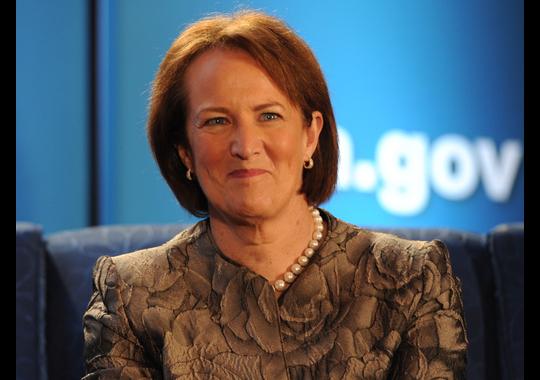What's the best way for small business to grow?
Jack Dorsey, co-founder of Twitter and founder of Square, talks about how simple technology can level the playing field for small businesses.
Digital technology, websites and social media now are key tools for growing small businesses and competing with larger ones.
"Even if you're making coffee or ice pops or lobster rolls, you can also expand your business using technology," says Small Business Administration chief Karen Mills. "It levels the playing field."
Examples:
• Swing's Coffees, near the White House, has customers tweeting about its lattes and employees tweeting at strategic times of the day about specials. Meanwhile, its baristas at one location place orders on iPads that let customers pay by swiping their credit cards. And those with the Square Wallet app can pay with their phones.
• After doing brisk business at seven farmers markets and with a food truck using mobile devices, the owner of the Washington, D.C., frozen fruit pops company Pleasant Pops turned to Kickstarter.com — a site that lets people post projects and solicit investment — to raise money to open a store. Bryan Sykora raised $13,000 in his first day and has attracted 400 supporters.
• Marilyn Caskey, owner of the San Antonio designer consignment store The Garment Exchange, used to spend much of her day answering the phone just to tell people her hours and location. After she spent an afternoon setting up a website with that information, her phone largely stopped ringing — and revenue increased 250% in the week after the site went up.
Despite such examples, however, nearly 60% of small businesses still are what Google calls invisible — operating without a website. Many of the rest are what Scott Levitan, Google's director of small business engagement, calls "completely invisible," meaning there's no original information from the company anywhere online.
BREAKING THROUGH: Travel tips for business executives[1]
That makes no sense, says Levitan, when Google data show small businesses with websites grow 40% faster than those without and when almost anyone — especially with free help offered by Google and others — can set up a site in hours.
"There's a perception out there that getting online is hard, that it's expensive and time consuming," says Levitan. "With modern Web tools that are relatively easy to use, it can take about an hour to set up if you're prepared."
So, is the phone book dead?
"I'm not saying they shouldn't be somewhere else," Levitan says of small businesses. "But they should definitely be on the Web."
Jack Dorsey, the co-founder of social-media giant Twitter and founder of payment system Square, says his mantra in business is to make and keep things simple. That led him to create Square, a system that lets even the smallest of businesses accept credit or debit cards with a reader that can be used with smartphones or tablets.
"Somewhere along the line commerce became more abstract," Dorsey says. "We asked a very simple question: Why can't commerce be as free and easy as communication?"
By answering that, Dorsey gave Sykora a way to handle transactions for his frozen pops at farmers markets using mobile devices. "Where are you going to plug in at a farmers market?" asks Sykora. "I've seen everyone adopt Square at farmers markets."
Food trucks are an example Mills cites of how "small businesses are able to use technology in ways that couldn't be imagined before."
But even brick and mortar stores can benefit. Swing's owner Mark Warmuth saved up to $10,000 on traditional cash registers by using Square at his Alexandria, Va., coffee bar. That way, employees don't handle customer credit cards. Customer response to Square and the iPad system has been "overwhelmingly positive," Warmuth says.
It's also helped turn the 100-year-old shop he bought in 2006 into a trendy, high-tech competitor to Starbucks.
Doug Povich, owner of the Red Hook lobster roll trucks in Washington, D.C., also uses Square, but doesn't stop there. Povich says he has "only seconds to make an impression" with his business. So, along with lobster rolls that keep customers coming back, he uses Twitter and Facebook as his "main vehicles for engaging customers."
Red Hook has successfully employed a version of what Povich calls the "ice cream truck rule": tweet where you'll be when.
Over the two years since Caskey started her website, sales are up 40%, Google says. That has let her to hire another employee and spend more time on marketing, rather than answering the phone.
Sykora says technology, including the payment system and tweets that helped people find his truck's location, "allowed us to start small as a mobile business and scale up to brick and mortar."
"It was all about building a community of followers who knew what we were doing," he says. "Then, we were able to reach out to them to help us get to next level on Kickstarter."

Karen Mills, administrator of the Small Business Administration, at an SBA conference in Washington, D.C.(Photo: H. Darr Beiser, USA TODAY)










